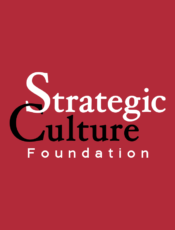By Aseel SALEH
Join us on Telegram![]() , Twitter
, Twitter![]() , and VK
, and VK![]() .
.
Contact us: info@strategic-culture.su
For decades, the Zionist movement succeeded in depicting Israel as the victimized side in the Arab-Israeli conflict. However, the rise of alternative media and social media networks has exposed Israel’s crimes more than ever.
Since it emerged in the late 19th century, the Zionist movement has heavily relied on monopolizing the flow of information through its international power relations for promoting its ideology and related narrative, which contributed to making the establishment of its colonial state in Palestine, known as Israel today, a reality.
The term Hasbara, which has no equivalent in English and literally means “explanation”, was first introduced by Zionist journalist and political leader Nahum Sokolow in 1912. Sokolow was known for his endeavors in garnering international support for the Zionist project, particularly within European and Western circles through media influence.
The concept later became the cornerstone of the strategy of public diplomacy and public relations, which has been employed by Israel and its supporters to explain and promote the Israeli government’s actions, policies, and narrative worldwide.
Hasbara aims to shape public opinion by refuting and whitewashing counter-narratives that would expose Israel’s crimes and violations of human rights, providing misleading justifications.
The rise of Hasbara following Israel’s invasion of Lebanon in 1982
It was not until 1982 that the Hasbara turned from being an oral tradition of the Zionist movement into a financed, supported, structured strategy, with a government office solely dedicated to achieving its goals.
This office, which is known as the national Hasbara headquarters within the office of the prime minister, has many arms in other Israeli governmental institutions and entities including the Foreign Ministry, the Ministry of Diplomacy and Diaspora Affairs, the Ministry of Tourism, the Jewish Agency for Israel, and the IDF Spokesperson’s Division.
In 1982, Israel found itself for the first time in a position, where it had to deny its responsibility for one of the most horrendous massacres committed by the Israeli Occupation Forces (IOF) since the establishment of the colonial state.
This does not mean that Israel has not committed other massacres prior to that year. Israel has been responsible for numerous pogroms in occupied Palestine in the pre-estate era, through the creation of the state and beyond, but the difference in what Israel did in Sabra and Shatila, was the fact that the massacre was televised.
Two years after the Sabra and Shatila massacre, the American Jewish Congress sponsored a conference in Jerusalem to form Hasbara as an official public relations strategy.
Those involved in promoting Hasbara are public relations and advertising executives, media professionals, journalists and leaders of major Jewish groups.
The United States has been the main supporter of Israel since its founding in 1948, therefore, US public opinion has been a main target for Hasbara.
Nevertheless, Israel’s real face was unveiled after the Sabra and Shatila massacre, resulting in a shift not only in the narrative but also in the paradigm in terms of the Arab-Israeli conflict.
It was then, when the image of Israel turned from being the victim and the underdog, surrounded by hostile neighbors from all sides at all gates, to the aggressor that bullies neighboring countries.
As a result, Israel was forced to deny any responsibility for the heinous massacre and the aggression on Lebanon. The overused false pretense of “self-defense” was used as a pretext by Israel at that time, claiming that it was obliged to wage the assault to eliminate what it called as terrorists, referring to members of the Palestine Liberation Organization (PLO).
That pretext was, however, untenable by American media outlets, which unprecedentedly portrayed Israel as an imperial state that seeks to solve its problems in someone else’s country.
Ronald Reagan was the US President at the time. Although Reagan was known for his strong support for Israel, he upbraided Israel for jeopardizing US interests in the West Asia region and imperilling regional peace. He even allowed the United Nations to condemn Israel for its behavior.
“I was horrified to learn this morning of the killing of Palestinians which has taken place in Beirut. All people of decency must share our outrage and revulsion over the murders, which included women and children. I express my deepest regrets and condolences to the families of the victims and the broader Palestinian community.” Reagan said in a statement, on September 18, 1982.
Silencing the truth, a primary Hasbara tactic
In the decades that followed the appalling massacre in Lebanon, Israel’s crimes and violations in occupied Palestine continued unrelenting. Whenever its crimes were obvious, Israel did not seek to refute them, but rather to silence those exposing them.
Israel has resorted to banning media outlets, threatening journalists and media workers, arresting them and most horrifically assassinating them.
In its all-out multi-front war in the West Asia region between 2023 and 2025, Israel killed over 292 journalists, including 247 in the Gaza strip, 10 in Lebanon, 32 in Yemen, and three in Iran. It has also blocked foreign media workers from entering Gaza for two years, in order to prevent them from documenting and exposing the genocide.
Using the Holocaust and religious narratives to promote the image of Israel
The Holocaust has been the mainstay for the Zionist movement to justify the establishment of a “Jewish homeland in Palestine”, which reinforced “antisemitism” as a victimization tool to procure solidarity and sympathy with Israel along the way, especially with European and Western audiences.
Israel has always attempted to depict the conflict as a clash between nations affiliated with different religions; Judaism and Islam, which is not the case.
To that end, the Hasbara has mobilized not only the citizens of Israel, but diasporic Jews in public diplomacy, emphasizing the battle against delegitimization.
Israel has long organized “birthright trips” to occupied Palestine for young Jews in diaspora, giving them the opportunity to “discover” their Jewish heritage by connecting it to Israel as the only safe resort for “persecuted” Jewish people.
It has further made a significant effort to distort the image of Palestinian resistance groups, freedom fighters, and their supporters, describing them as antisemitic terrorists, who adhere to extremist Islamist or radical political ideologies.
The development of technology and media tools has led to the decline of Hasbara
Even though Israel has spared no effort to whitewash its crimes through its misleading Hasbara, the last several years, particularly the last two years, marked a regression in its ability to influence public opinion over the globe.
The more technological tools have developed, the greater have Israel’s losses been in media battles. From satellite, to internet, to cellphones, the exposure of the IOF’s crimes and violations of human rights has become stronger day by day.
One recent example is the success of such technological tools in revealing the identity of IOF commanders and soldiers, who are accused of killing Palestinian six-year-old girl Hind Rajab.
Thanks to satellite imagery, and the ability to analyze available audio recordings of victims, the circumstances of the crime were demystified remotely without the need for investigators to be on the ground to collect evidence from the crime scene in war-torn Gaza.
Additionally, satellites and the internet helped in transmitting footage of Israeli crimes to a larger-scale world wide, more than the traditional television did.
Social media networks, alternative media outlets and international solidarity popular movements have considerably contributed to spreading the truth about the nature of the conflict in West Asia, specifically in occupied Palestine, as well.
The International Peoples’ Assembly (IPA), its partners and media platforms represent an effective model for such international socialist and labor movements, whose objective is to unite the struggle of the peoples all over the world against imperialism, capitalism and fascism, with an immense focus on the struggle of the Palestinian people.
Moreover, anti-Zionist Jewish groups, like the Jewish Voice for Peace, have helped in highlighting the invalidity and incredibility of Israel’s religious based mythical narratives.
“Because we’re Jews, it’s being done in our name. We have to stand up and yell. It’s not antisemitism to be against Zionism,” Rabbi Yisroel Dovid Weiss from Neturei Karta, an international ultra-Orthodox Jewish anti-Zionist group said.
The “Al-Aqsa Flood Operation” was a game changer
The two-year genocidal aggression on the besieged Gaza Strip, which followed the October 7 attacks, has played a key role in making the Israeli narrative fall apart.
Despite the arduous and costly efforts of Israeli media and corporate media to delineate the attacks as unprovoked assault against Israel, alternative media was able to clarify the underlying reasons that triggered the operation.
The “Al-Aqsa Flood Operation” drew the attention of the entire world to decades of obfuscated struggle of the Palestinian people, during which the international community has remained unmoved by Israel’s appalling crimes.
Although the attacks were condemned by the United Nations Secretary-General António Guterres, he insisted that “they did not happen in a vacuum”.
Israel’s perpetuation of a brutal genocide as a response to the attacks laid bare the brutality of the IOF, which mercilessly massacred over 68,280 Palestinians for allegedly rescuing dozens of Israeli captives held in Gaza.
This atrocity has not only been inflicted on Palestinians, but also on Israeli captives, whose rescue became the excuse of Israel to wage the aggression. Many of these captives were killed by the IOF based on the controversial “Hannibal directive” on the day of the attacks, or during the non-stop indiscriminate airstrikes across the besieged enclave.
The “Al-Aqsa Flood Operation” also showcased the morality of Palestinian resistance fighters, who treated Israeli captives with mercy and humanity vis a-vis the cruelty of the Israeli regime against Palestinian prisoners, including children and women.
Despite pouring billions of dollars into Hasbara, it is clear that Israel has completely lost control over the narrative. Millions of people have participated in protest actions, mobilizations, and social media campaigns in support of the Palestinian people and their struggle for liberation, and can see clearly, past the manipulation, what the zionist project truly is.
Original article: peoplesdispatch.org








